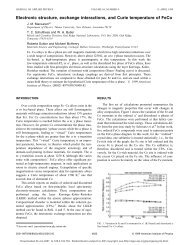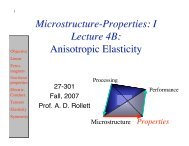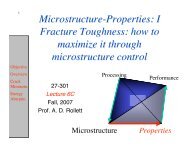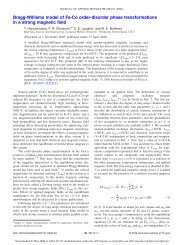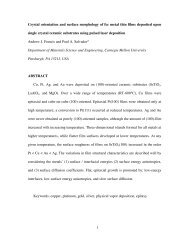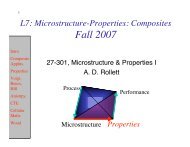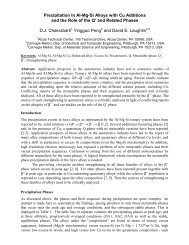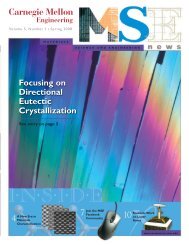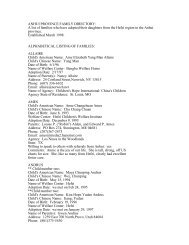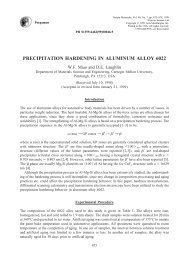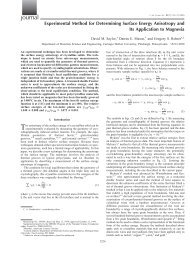popLA Manual (PDF) - Materials Science and Engineering
popLA Manual (PDF) - Materials Science and Engineering
popLA Manual (PDF) - Materials Science and Engineering
Create successful ePaper yourself
Turn your PDF publications into a flip-book with our unique Google optimized e-Paper software.
Figure 5 – DEMO_W-Q.DIF<br />
Concerning Hardcopies<br />
The prints you have been making are fast <strong>and</strong> adequate, but of lower resolution than the screen; <strong>and</strong> they do not<br />
copy well. The figures in the document result from a different way of making hardcopies. We used a<br />
commercial screen-dump program (GRAFLASR) to make a .PCX file, then opened it in PAINTBRUSH (within<br />
WINDOWS 3.1), <strong>and</strong> printed in the "coarse-dither" option. To get all eight gray-shades, you must have a 256color<br />
monitor. The figure may not look pretty to you now: but copy it (it works) <strong>and</strong> then copy it to a reduction<br />
of less than 70%: it works, <strong>and</strong> it looks pretty. (If you want just a single figure, for example one transparency,<br />
you can print out in high resolution with a 600dpi printer – but it doesn't copy well.)<br />
Also try the regular Laserjet method (via F3), having loaded POPFONT?.HP when first entering POD).<br />
This works as expected for 2 plots; for more plots, the arrangement on the hardcopy will be different from that<br />
on the screen. The option to use PostScript is similar (via F4).<br />
DISPLAY the three-dimensional Orientation Distributions (ODs)<br />
Now inspect your .SOD (p.1#1). The format looks much like the .EPF, but there are only 19 lines of data in each<br />
block. The OD (orientation distribution) files list the intensities in sections of 3-dimensional orientation space.<br />
In the .SOD, each section is a “partial inverse pole figure”: partial in that the third angle is constant; the sum of<br />
all sections is the projection, which is the inverse pole figure for axis 3, which is appended as the last block.<br />
This file is only one way to arrange the derived densities in orientation space; it is the “Sample Orientation<br />
Distribution”, or. SOD (with respect to crystal coordinates).<br />
Each section contains one quadrant (for cubic crystal symmetry): 19 lines. The sections are given at every 5° of<br />
the section angle. There are 19 of them (because we chose orthotropic sample symmetry). This is too many to<br />
plot <strong>and</strong> inspect comfortably.<br />
• Let us pare the file down to sections every 10°: p.5#5 will let you do this. Call the output file .SOS (the last S<br />
for Selected sections). Plot it (p.6#2): 11 plots per page. If you use the scale 400/3 again, the last plot (the<br />
projection) should look quantitatively like the .WIP plotted out before (only smaller in size). However, since<br />
the densities in 3-D orientation space are usually higher than in the projections, it is better to plot it to a<br />
different scale: try it now, using F2, (put a net on every plot for a change, but leave out the contours), then<br />
choose the maximum 1600, next 3.<br />
A different way to section orientation space is as "partial pole figures" or a "crystal orientation distribution", or<br />
.COD (with respect to sample coordinates).<br />
• To rearrange the OD that WIMV gave us from an .SOD to a .COD, use p.5#3, then again pare to something<br />
you can plot: p.5#5, call .COS. Plot the 11 sections: the last one is the projection, which is the {001} pole<br />
figure, <strong>and</strong> thus should be the same as the second plot on .WPF.<br />
TUTORIAL 14



